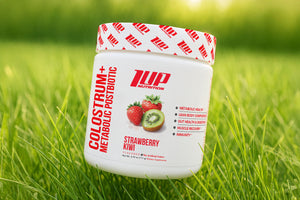After you finish your workout, you might be looking for a way to relax, unwind, and “recenter” yourself before heading back into the real world. If your gym has a steam room or sauna, you may have thought about trying those a time or two but have held off on account of not knowing what their purpose is, how they are different, or if they’ll even give you any benefit aside from making you hotter and sweatier than you already are.
That’s where this article comes in handy.
In this article, we’ll explain the differences between steam rooms and saunas as well as why you might want to use one vs the other.
Let’s get started!
Steam Room vs Sauna -- What’s the Difference?
On the surface, both steam rooms and saunas seem remarkably similar. They’re small, hot rooms where you sit and “relax” (if that’s possible when you’re sweating from the heat) for a prescribed amount of time.
Upon closer inspection, you’ll find that there are some notable differences between the two hot boxes.
The most obvious difference between a steam room vs a sauna is the method in which they are heated.
Traditionally, saunas use dry heat, created using a closed stove or rock-filled electric heater. Steam rooms are heated by a generator filled with boiling water that emits hot steam into the air.
(Note: The exception here is that Turkish-style saunas use a higher moisture environment than typical Finland-style saunas.)
This difference in heating brings us to the next major difference between steam rooms and saunas -- the air moisture content.
Steam rooms are much more humid than saunas.
Additionally, saunas tend to be heated to a higher temperature than steam rooms. Generally speaking, saunas are heated to temperatures between 150-195°F (65-90°C) while steam rooms are heated between 100 and 120°F.
Now, due to the near 100% humidity in steam rooms, they can quite often feel as hot or hotter than saunas.
The inside of both steam rooms and saunas typically contain benches along with temperature controls to regulate the temperature.
Benefits of Saunas
The primary benefits of sauna usage are in regards to its effects on cardiovascular health.
Research from 2018 found that sauna bathing was linked to a number of cardiovascular benefits, included lower blood pressure and improved arterial flexibility.
In case you weren’t aware, stiff, inflexible blood vessels are heavily implicated in cardiovascular disease. Therefore, anything that helps reduce blood pressure, enhance blood flow, and decrease arterial stiffness is beneficial for cardiovascular health.
The reason saunas improve blood flow has to do with the effects of heat on your skin. When your body is exposed to a hot environment (such as that of a sauna), your skin temperature sharply increases and you begin sweating.
This is completely normal as it is a protective measure used by the body to keep your core temperature within a safe range.
The heat stress induced by the sauna also improves vascular function and blood flow. It also causes an increase in heart rate.
While that might sound alarming, researchers have identified that this rise in heart rate is similar to the heart rate increase induced by aerobic exercise, which has long been established to support cardiovascular health.
Plus, when your heart rate increases, more blood flows to your muscles, which supplies them with more oxygen and nutrients, allowing for better recovery following training.
To top it off, additional research also indicates that regular sauna bathing may help reduce oxidative stress in the body, which may reduce the occurrence of heart disease and other inflammatory disorders.
Benefits of Steam Rooms
Similar to saunas, steam rooms have also been associated with improvements in cardiovascular health due to improved circulation and lower blood pressure.
Additional research also indicates that sitting in a steam room stimulates the release of aldosterone a hormone involved in blood pressure regulation. When aldosterone is released, it can help lower high blood pressure.
Being in the steam room (as well as the sauna) may also help lower stress as it can decrease your body’s production of cortisol.
Cortisol is the hormone released by the adrenal gland whenever we encounter or perceive a threat or stressor. When we feel threatened or pressured, cortisol levels rise and our “fight or flight” system kicks into gear.
Low cortisol levels help you to feel relaxed and calm, promoting better focus and mood.
Taking some time in either hot box (steam room or sauna) may also benefit your joints.
Research from 2013 found that heat applied to a joint can reduce the amount of force needed to move the joint by up to 25% compared to cold therapies.
There is, however, one extra benefit to steam rooms for those who may have respiratory issues, such as allergies or asthma. Dry heat can often exacerbate the dryness felt in the throat and sinus passages. Thanks to the humidity of steam rooms, individuals with respiratory issues may experience less irritation and a better hydrated respiratory tract.
The Bottom Line on Steam Room vs Sauna
Both steam rooms and saunas provide a heated environment in which you can relax. They both help increase blood flow and may provide cardiovascular benefits as well as improved recovery from exercise.
The big differences are that saunas offer dry heat and a hotter environment while steam rooms offer more humid environments and a lower heat.
Experiment with both to see which one you enjoy more, or if you like both, rotate between the two to get the benefits of each!
References
- Laukkanen, J. A., Laukkanen, T., & Kunutsor, S. K. (2018). Cardiovascular and Other Health Benefits of Sauna Bathing: A Review of the Evidence. Mayo Clinic Proceedings, 93(8), 1111–1121. https://doi.org/10.1016/j.mayocp.2018.04.008
- Laukkanen, T., Kunutsor, S. K., Zaccardi, F., Lee, E., Willeit, P., Khan, H., & Laukkanen, J. A. (2018). Acute effects of sauna bathing on cardiovascular function. Journal of Human Hypertension, 32(2), 129–138. https://doi.org/10.1038/s41371-017-0008-z
- Shui S, Wang X, Chiang JY, Zheng L. Far-infrared therapy for cardiovascular, autoimmune, and other chronic health problems: A systematic review. Exp Biol Med (Maywood). 2015;240(10):1257–1265. doi:10.1177/1535370215573391
- Heinonen I, Brothers RM, Kemppainen J, Knuuti J, Kalliokoski KK, Crandall CG. Local heating, but not indirect whole body heating, increases human skeletal muscle blood flow. J Appl Physiol (1985). 2011;111(3):818–824. doi:10.1152/japplphysiol.00269.2011
- Lohman EB 3rd, Sackiriyas KS, Bains GS, et al. A comparison of whole body vibration and moist heat on lower extremity skin temperature and skin blood flow in healthy older individuals. Med Sci Monit. 2012;18(7):CR415–CR424. doi:10.12659/MSM.883209
- Panov, S. F., & Pleshakov, A. A. (2011). [Effect of steam bath on gastric secretion and some endocrine changes of athlete-fighters]. Fiziologiya cheloveka, 37(2), 92–99.
- Petrofsky JS, Laymon M, Lee H. Effect of heat and cold on tendon flexibility and force to flex the human knee. Med Sci Monit. 2013;19:661–667. Published 2013 Aug 12. doi:10.12659/MSM.889145






